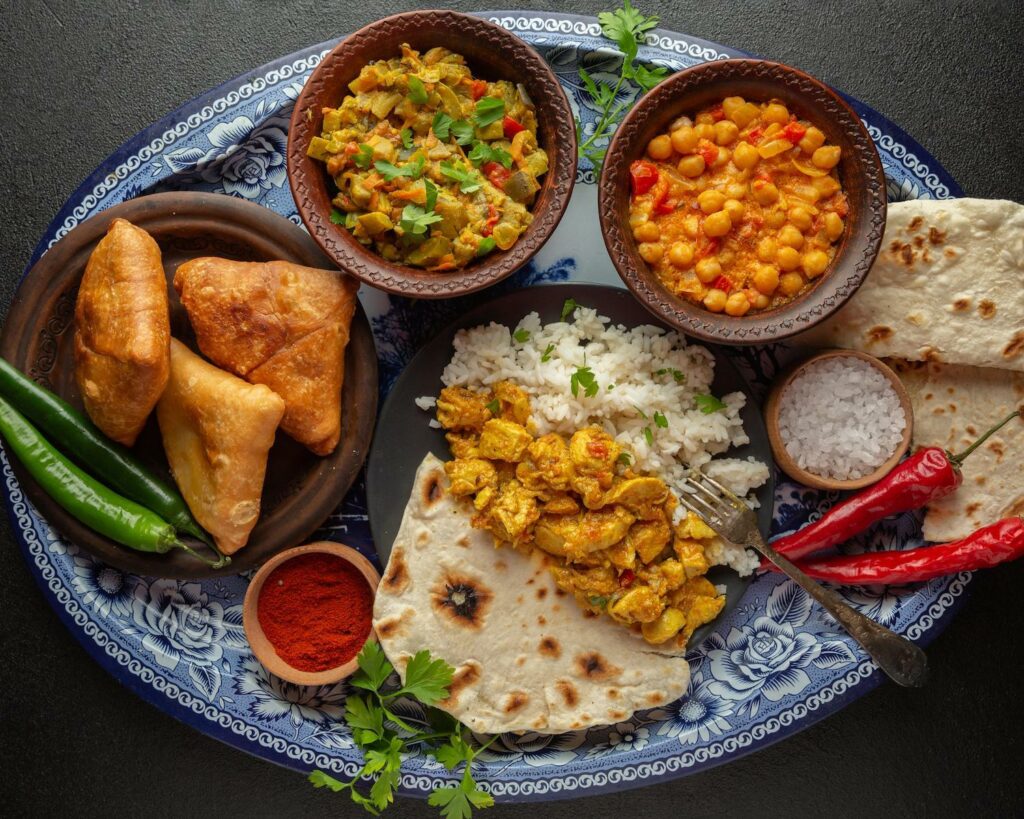Even Chefs get stuck in a seasoning rut once in a while.
We tend to fall in love with OUR favorite recipes.
The tried-and-true favorites we often call them.
And while our favorite recipes are great…you can’t go back to that well too many times without eventually creating a “stale” menu.
Even without realizing it.
The phrase “variety is the spice of life,” has never rang truer than when it comes to deciding what should be on your future menus, and when to consider “retiring” some “old favorites” to make room for some NEW favorites in 2023.
Yes, there will always be a few customers that will perhaps lament about losing a dish that they love, but consider the fact that they may also be one of the many customers that are desperately trying to get out of their time-share resorts.
First experiences can be magical, and for a while it’s THE “thing.” But sometimes, the magic just wears off.
People, whether they admit it or not, do like some variety.
With that said, we’d like to give you some “spicy” options that you may never have tried, to head you on a new course this year.
Five seasoning blends that just might change the way you cook in 2023.
Not surprisingly, most of these blends are from the ancient HOME of spice blends, namely the Middle East.
Even if your customers aren’t necessarily big into traditional Middle Eastern fare, don’t let that deter you. Most all of the spices that make up these blends are ones that your customers are VERY familiar with, including savory spices like cumin, coriander, paprika, fennel, and marjoram as well as sweet spices like cinnamon, ginger, and cardamom.
Adding a bit of these unique spice blends to your current or future recipes can add an enormous range of interesting flavors in your culinary arsenal this year.
Dare to be bold.
Let’s start with…
Ras el Hanout
Most commonly found in the cuisine of Tunisia, Algeria, and Morocco.

Ras el Hanout translates from Arabic into English as “head of the house.” Meaning it’s the best and highest quality blend a seller has to offer.
Similar to curry powder, the recipe of herbs and spices that make Ras el Hanout, as well as their ratio to one another, can vary from shop to shop. You can however, expect to see the “usual suspects” such as: cardamom, black pepper, cumin, ginger, allspice, cinnamon, nutmeg, clove, chili peppers, coriander, fenugreek, paprika, turmeric, and coriander seed to be in most all of the blends.
Safe to say, that unless you go to the trouble of making your own blend “in-house,” it’s best to find one to buy that you like and stick with it. Especially when you consider that many traditional recipes use more than 4 dozen herbs and spices in their recipes!
Of course, as you might expect, Red Goose has created a traditional blend what we think you will thoroughly enjoy.
Ras el Hanout is pretty much a 50/50 sweet and savory spice blend with a mild amount of heat, if any at all. Its complex flavor is typically used as a meat or a fish rub in specialty dishes.
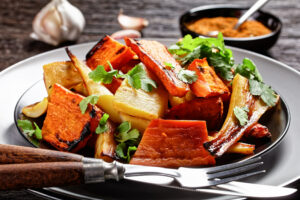
It’s also added to pasta or rice as a flavoring, and stews and meat casseroles cooked in a tagine.
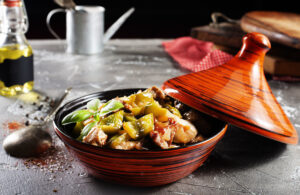
Harissa Spice Blend
The main ingredient in Harissa is chiles, so it’s no wonder that this North African spice blend was created by this region after chiles were introduced there in the 14thcentury by spice traders.
Spicy hot, is probably the best way to describe Harissa.
You’ll often find it used as a condiment when it is pureed with olive oil and/or water. Considering its name derives from the Arabic term meaning “to crush, grind, or puree,” it’s quite often how this spice blend is used, as it creates a condiment similar to sriracha and Tabasco sauce.
The dry Harissa blend is also used as a meat rub (especially kabobs), and as a flavoring in stews, soups, vegetables, and rice dishes.
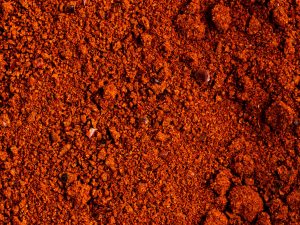
Its flavor is considered to be spicy, peppery and a bit smoky and its typical ingredients include more savory than sweet spices which include: chili peppers, coriander, paprika, red pepper, dehydrated garlic, salt, cinnamon, caraway and ginger.
Biryani Spice Blend
Biryani spice is named after the rice dish called biryani, developed by the Muslims of South Asia. This dish eventually spread throughout India, Thailand, and Malaysia.
Similar to how curry powder came into being, the blend, represented the usual combination of individual herbs and spices used to make Biryani, and if you buy the blend, it makes the final preparation much easier.
While the ingredients and their proportions vary from region to region, the most common ones are: fennel seeds, cumin, turmeric, nutmeg, black pepper, cloves, cardamom, cinnamon, bay leaves, coriander, mint, ginger, dried onions, green chiles, star anise, allspice, and garlic.
As is true with curry powder, once again there are many spice blend recipes for Biryani, and they all differ according to their region and all with different pre-fix names as a result.
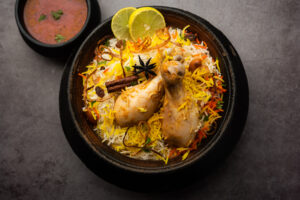
For example:
Sindhi biryani, which is popular in Pakistan.
Hyderabadi biryani: This biryani is one of India’s most popular types of biryani.
Malabar biriyani: From the Indian state of Kerala.
Calcutta/Kolkata biryani, likewise from Calcutta
Ambur biryani: From the leather-tanning city in Tamil Nadu
Lucknowi biryani: Based on the Persian cooking style.
Mughlai biryani: With cheese curd, chicken, almond paste, ghee, dry fruits, and green chilies.
Zahtar Seasoning
More savory spiced than sweet spiced, Zahtar or Za’atar Seasoning (not to be confused with the herb za’atar, a wild, mint-related herb similar to oregano and marjoram), is a mainstay seasoning blend popular all over the Middle East.
Once again, and forgive me if you’ve heard this story before, its recipe varies from region to region adding or subtracting various herbs as spices to satisfy the tastes and traditions of the locals.
While the original recipe does call for the use of the za’atar herb, its not easy to find. So more often than not, the recipes use thyme, oregano, or marjoram as a substitute.
The other key components in Zahtar are sesame seeds and sumac while still others add: dill, savory, cumin, fennel, coriander, orange peel, caraway seed, cinnamon, allspice, hyssop, and even rose buds!
Being a more “savory” flavored seasoning, Zahtar can be used in so many ways, such as: a meat rub, in hummus, as a topping on crusted breads, and even in salads and salad dressings.
It is however, recommended that if using Zahtar seasoning in a cold dish recipe, that it first be “bloomed” by adding it to a heated oil to help release its full flavor potential before then adding it to the recipe.
Berbere Spice Blend
Translated to “pepper” or “hot,” you’ll love this 5th century Ethiopian spice blend used in its national dish Doro Wat, which is a spicy chicken stew, or, perhaps mixed with oil, mead, or red wine to make a condiment called awaze.
Made from key ingredients such as: red chili peppers, fenugreek, ginger, coriander, cardamom, allspice, cumin, peppercorns, cloves, cinnamon, and some lesser-known spices grown in that region such as korarima, ajwain, and long pepper, its complex flavor is known as slightly spicy with warm notes of citrus.
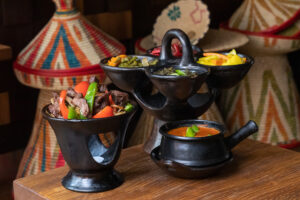
Berbere is also used as a meat rub, in braised casserole dishes, and when used as awaze, as a dipping condiment for breads.
Other honorable spice blends to try this year are: Tandoori Seasoning Blend, Herbs de Provence, Garam Masala, and Rosemary Rotisserie Marinade Seasoning
Of course, ALL of these seasoning blends are readily available at the Red Good Spice Company and we hope that you’ll take the opportunity to try one or all of these amazing seasoning blends as you create some of your NEW favorite dishes of 2023!

